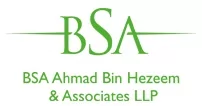The United Arab Emirates' life insurance market is set for radical change in 2020 with the implementation of the "New Life Insurance and Family Takaful Regulations" 1. The United Arab Emirates Insurance Authority ("IA") promulgated Decision No. (49) of 2019 Concerning Instructions for Life Insurance and Family Takaful Insurance (the "Regulations"), which has wide implications for all market participants including insurers/reinsurers, intermediaries, policyholders and other related parties such as banks and actuaries.
The Regulations move to a more western-style approach with greater transparency and control over distribution channels and policyholders' rights. Historically, the UAE life market has been fraught with a lack of consumer protection and control over commission payments linked to certain life products. This has unfortunately encouraged a lack of integrity in the market through various third party distribution channels, resulting, in some cases in mis-selling. The essence and body of the Regulations address these concerns to a large extent and are a welcome change to the UAE life insurance market.
The Regulations cover 22 Articles, dealing with, inter alia commission caps for intermediaries related to the sale on life products including investment-related products, wider disclosure obligations on insurers, intermediaries and other distribution channels, such as banks as well product filing obligations with the IA and cooling-off periods and protection of policy churning for potential policyholders.
Traditionally, many life insurance products tend to be sold through banks in the United Arab Emirates (UAE) as a means of distribution. Often these distribution channels come with commercial arrangements between the banks and insurance company that do not necessarily benefit the end policyholder. In some cases, this is prejudicial to the policyholder where premium payments are absorbed in administrative charges to facilitate these [multiple] distribution arrangements. Such practices will now be unlawful under the Regulations 2. Given the wide definition of "Distribution Channels" 3., which includes Banks, and the new legal provisions under the Regulations, distribution channels may see a change to a direct sale basis from insurance companies cutting out intermediaries in the long run.
The question, therefore, is to explore, what are the implications, if any for "Bancassurance" in terms of a distribution channel for life insurance products in the UAE.
Bancassurance is one of the fastest-growing distribution channels of insurance in the Gulf Cooperation Countries (GCC), in addition to the influence of technology electronic/digital platforms, such as insurance market aggregators. The GCC and their respective financial regulators have, in some cases promulgated laws and regulations dealing with insurance distribution through banks with the objective of consumer protection in mind. Yet, the markets and regulations do not appear to be completely aligned insofar as allowing free market access and distribution to insurance providers and wider choices to consumers respectively.
Bancassurance is dependent on a mutual partnership between a bank and insurance provider offering insurance products or insurance benefits to the bank’s customers thereby providing an alternative distribution channel for insurance providers. Often, in many jurisdictions, commissions are shared between banks and insurance providers related to the sold products and the bank is the client point of contact although some regulators do not permit such arrangements.
Bancassurance is by no means a new method of insurance distribution and dates back as far as the 19th century. Bancassurance's growth, to a large extent, arises from European and European legislation in the form of Directives permitting Bank's freedom to provide services on a cross-border basis in the European Union.
The European model and markets for bancassurance are a well-developed mature market in paradox to the GCC and Middle East markets, which is still, to a large extent finding its feet. That said, there have been positive in-roads to assist the GCC markets with regulatory frameworks for bancassurance development as recent as 2018.
Historically in the UAE, bancassurance was not regulated and only a handful of consumer protection laws were available to protect customers. Banks' and insurance providers' relationships had no regulatory oversight, although contractual arrangements, for the most part, were put in place but often to the detriment of the consumer.
The IA issued a circular in September 2011 setting out rules and guidance for insurance providers to follow pending a proposed draft resolution regulating the marketing of insurance policies by banks. On May 23rd, 2018, IA issued Decision No. (13) of 2018 regulating bancassurance in the UAE (the “Circular”).
The Circular is far-reaching in that it provides limitations on the bank's capacity to act as "insurance agency, insurance brokerage, insurance consultancy, or any insurance-related profession" and these regulatory requirements must be set out in the contractual language of the agreement between the bank and the insurance provider. This limits banks as a pure marketing channel.
Insurance providers and banks need to be authorised by the IA and UAE Central Bank respectively to carry out activities of bancassurance. This obligation is specified in Article 2 of the Circular and licenses can be obtained for a period of one year and renewable thereafter.
Pursuant to Article 2 of the new instructions of the IA, no insurance company will be able to conduct bancassurance without obtaining prior approval from the IA.
The Circular requires all insurance providers wishing to market insurance policies through banks to be established in the UAE, and to be licensed to operate in the UAE (whether through a branch, foreign branch or an insurance agent). This will prohibit foreign unlicensed insurance providers from setting up arrangements with UAE banks, which has historically happened.
Certain prescribed contractual terms must be in place in a written agreement between the bank and the insurance provider. These include commission arrangements including calculations, procedures for collection and payment dates; written statements showing that the bank is authorised to receive insurance premiums; obligation of the bank to transfer all premiums to the insurance provider providing regular detailed statements.
The IA will be permitted to inspect and audit banks in respect of their bancassurance arrangement to enforce the compliance requirements, subject to approval of the UAE Central Bank.
Bancassurance in the UAE is a very well-developed market despite the recent enactment of the Circular. That said, the rules will take time to play out and change current attitudes where banks and insurance providers will need to comply with the strict limitations in the Circular.
Board of Directors' Decision No. (13) of 2018 Instructions Concerning Marketing Insurance Policies through Banks is mentioned and prescribed in the preamble to the Regulations. Given the sweeping changes to the life insurance market arising from the Regulations, specifically the provisions around commission caps, policyholders' fees, multiple distribution channels, and disclosures, it is likely that insurance companies will need to overhaul their internal compliance and oversight processes and even consider offering alternative products to meet compliance with the Regulations. To this end, insurance companies offering life insurance products will likely change the way they distribute their products to the market. This opinion is expressed in terms of how the legal provisions of the Regulations will sit with the Circular.
Given the limited role of banks as pure marketing channels and the extensive provisions for insurance companies to put in place, at probably large costs under the Regulations and Circular, discussions will need facilitating on who picks up these costs if banks are to be used as distribution channels. With restrictions around commission caps, policyholder fees, and distribution channels insurance companies will likely look to technology to explore direct sales channels.
Alternatively, banks may look to insurers to second in insurance staff with the necessary expertise to comply with the regulatory obligations and perhaps look at cost-sharing arrangements in commercial agreements, bearing in mind that policyholders' rights, including premiums, are not prejudiced in any way. The technical provisions of the Regulations are far-reaching with actuarial requirements and this will present some difficulties with the existing distribution of channels.
The Regulations, in some respects, offers opportunities to alternative distribution channels through technology and bank are best placed to explore these opportunities through FinTech initiatives while still remaining as a major source of distribution of life products in the UAE.
Both banks and insurance companies should now start considering their existing arrangements and look to make the necessary changes to their internal compliance processes to meet both the technical and legal provisions of the Regulations. As a starting point, insurance companies should carry out audits of its existing distribution channels and review all contractual provisions in place, which may not comply with the regulations or the Circular.
Footnote
1 Insurance Authority Board of Directors' Decision No. (49) of 2019 Concerning Instructions for Life Insurance and Family Takaful Insurance https://ia.gov.ae/en/legislations/decisions-regulations-instructions
2 See Articles 5 & 6(3) of the Regulations
3 Article (1) – Definitions of the Regulations "Insurance Agents, Insurance Brokers and the marketing of insurance policies through banks or finance companies, as well as, the direct production of the Company through its employees."
The content of this article is intended to provide a general guide to the subject matter. Specialist advice should be sought about your specific circumstances.

